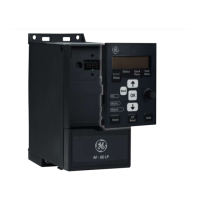[21] Keypad Potentiometer Use signals from Keypad potentiometer as reference.
3-17 Reference 3 Source
Option: Function:
See Par. 3-15 for description.
[0] No Function No reference signal is defined.
[1] Analog Input 53 Use signals from analog input 53 as reference.
[2] Analog Input 60 Use signals from analog input 60 as reference.
[8] Pulse input 33 Use signals from pulse input as reference, see par. 5-5*.
[11]
*
Local Bus Reference Use signals from local bus as reference.
[21] Keypad Potentiometer Use signals from Keypad potentiometer as reference.
3-18 Relative Scaling Reference Source
Option: Function:
Select the source for a variable value to be added to the fixed value defined in par. 3-14, Preset Relative Reference.
[0]
*
No Function The function is disabled
[1] Analog Input 53 Select analog input 53 as relative scaling reference source.
[2] Analog Input 60 Select analog input 54 as relative scaling reference source.
[8] Pulse Input 33 Select pulse input 33 as relative scaling reference source.
[11] Local Bus Reference Select local bus ref. as relative scaling reference source.
[21] Keypad Potentiometer Select Keypad potentiometer as relative scaling reference source.
4.4.4. 3-4* Accel/Decel 1
A linear ramp is characterized by ramping up at a constant speed until the desired motor speed has been reached. Some overshoot may be experienced when
reaching speed, which may cause speed jerks for a short while before stabilizing.
An S-ramp accelerates more smoothly thus compensating for jerks when the speed is reached.
See the below figure for a comparison of the two ramp types.
Accel/Decel Time:
Acceleration time from 0 to nominal motor frequency (par. 1-23).
Ramp down: Deceleration time from nominal motor frequency (par. 1-23) to 0.
AF-60 LP™ Micro Drive Programming Guide
27
4

